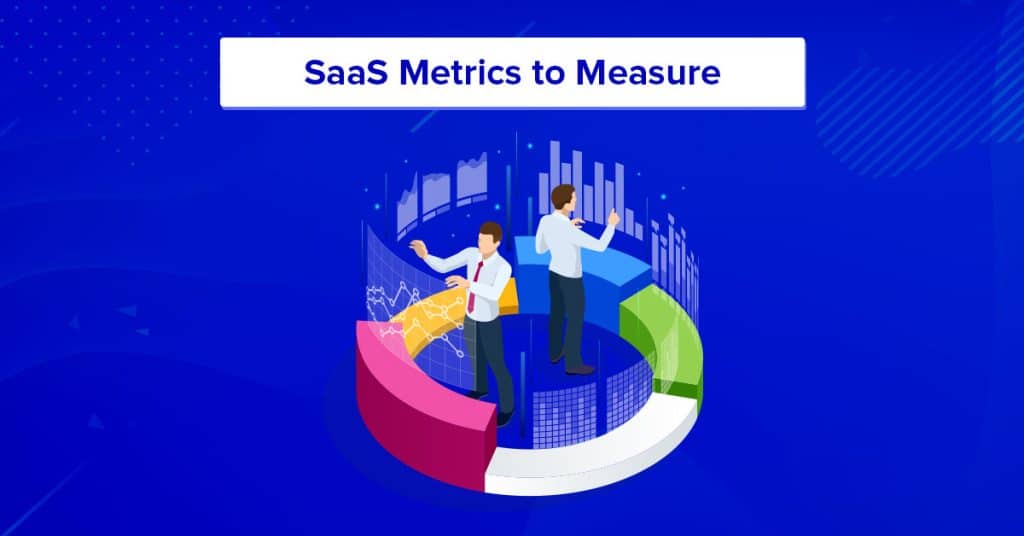Introduction
In the rapidly evolving landscape of software as a service (SaaS), understanding and tracking the right metrics is crucial for the growth and success of any SaaS business. The digital era has transformed how we view software development and delivery, making it more important than ever to focus on SaaS key metrics. In this comprehensive guide, we will explore the essential software development metrics and key SaaS metrics, providing insights into how they can effectively measure success and drive strategic decisions in your SaaS business.
The Importance of Tracking SaaS Key Metrics
This SaaS metric offers invaluable insights into customer behavior, product performance, and overall business health. By closely monitoring these metrics, SaaS companies can make data-driven decisions, optimize their strategies, and ultimately achieve sustainable growth. This section delves into the rationale behind prioritizing SaaS key metrics in your business strategy.
How Software Development Metrics Shape SaaS Success
Software development metrics are integral to understanding the efficiency and effectiveness of the development process. These metrics provide a framework for evaluating the quality of the software, the productivity of the development team, and the alignment of the product with market needs. This segment emphasizes the significance of software development metrics in shaping the trajectory of a SaaS business.

Key SaaS Metrics: The Pillars of SaaS Business Success
SaaS key metrics are the backbone of any successful SaaS business. They provide actionable insights that can help companies refine their strategies and align their operations with customer needs and market trends. This section will delve into the most critical SaaS metrics that businesses should monitor.
Customer Acquisition Cost (CAC) and Lifetime Value (LTV)
Understanding the balance between the customer acquisition cost CAC and the revenue they bring over time (LTV) is essential. This part explores how these metrics are calculated and why they are critical in evaluating the financial health and sustainability of a SaaS business.
Churn Rate and Customer Engagement
Churn rate is a pivotal metric that measures customer retention and satisfaction. Alongside, customer engagement metrics provide insights into how actively users are interacting with your SaaS product. This subsection discusses strategies to optimize these metrics for long-term success.
The Role of Software Development Metrics in Enhancing SaaS Products
Software development metrics play a crucial role in refining SaaS products. They enable developers and managers to measure progress, identify bottlenecks, and ensure that the product meets quality standards and user expectations. This section will explore how these metrics contribute to the continuous improvement of SaaS offerings.
Agile Development Metrics: Speed and Quality
Agile methodologies emphasize speed and quality in software development. Metrics like sprint velocity and code quality indicators are vital for agile teams. This part discusses how these metrics can lead to more efficient development cycles and higher-quality SaaS products.
DevOps Metrics: Bridging Development and Operations
DevOps metrics focus on the seamless integration of development and operations. Metrics such as deployment frequency and mean time to recovery (MTTR) are crucial for understanding the efficiency of the DevOps pipeline. This subsection will delve into how these metrics impact the overall performance and reliability of SaaS products.
Utilizing Key SaaS Metrics to Drive Growth and Innovation
In a competitive market, leveraging key SaaS metrics is essential for driving growth and fostering innovation. This section focuses on how SaaS businesses can use these metrics to identify opportunities, streamline operations, and stay ahead of the curve.
Data-Driven Decision Making with SaaS Metrics
SaaS metrics provide a wealth of data that can inform strategic decisions. This part will explore how companies can use this data to identify trends, make informed predictions, and optimize their business models for maximum efficiency and profitability.
Innovation Through Metrics-Driven Insights
Innovation is critical for the sustainability of any SaaS business. This subsection discusses how analyzing key SaaS metrics can lead to innovative ideas, helping businesses to differentiate themselves and offer unique value propositions to their customers.
Optimizing Performance with SaaS Key Metrics
Leveraging Real-Time Analytics for Proactive Decision-Making
This section will delve into how real-time analytics, a vital component of SaaS key metrics, empower businesses to make proactive decisions. By monitoring software development metrics in real-time, companies can quickly adapt to market changes, ensuring agility and competitive advantage.
Enhancing Customer Experience through Key SaaS Metrics
Utilizing Feedback Loops and User Analytics for Product Evolution
Here, the focus will be on using key SaaS metrics to analyze customer feedback and user engagement. This analysis aids in continuously evolving the product to meet user expectations, thus boosting customer satisfaction and loyalty.
Financial Health Analysis Using SaaS Key Metrics
Balancing Revenue Growth with Sustainable Development
This heading will explore the role of key SaaS metrics in financial health analysis, emphasizing how balancing revenue growth with sustainable software development practices leads to long-term business stability.
Strategic Planning with Key SaaS Metrics Insights
Forecasting and Roadmap Development for Future Success
The focus here will be on using SaaS key metrics for strategic planning, including forecasting future trends and developing roadmaps. This approach helps in aligning software development metrics with business goals for future success.
Scaling Your SaaS Business with Key Metrics
Identifying Scalability Opportunities through Metric Analysis
This section will discuss how analyzing key SaaS metrics can reveal opportunities for scaling the business. It will include strategies for scaling operations, development processes, and customer acquisition efficiently

Conclusion
Measuring success in the SaaS industry requires a deep understanding of both software development metrics and key SaaS metrics. These metrics provide invaluable insights into every aspect of a SaaS business, from customer acquisition and retention to product development and operational efficiency. By focusing on these metrics, SaaS companies can navigate the complexities of the digital era, make informed decisions, and pave the way for sustainable growth and success. As the SaaS landscape continues to evolve, staying attuned to these metrics will be crucial for any business aiming to thrive in this dynamic and competitive field.
What is a SaaS metrics?
Software-as-a-Service (SaaS) metrics are key performance indicators (KPIs) used to measure and analyze the performance, growth, and success of SaaS companies. These metrics typically focus on aspects such as customer acquisition, retention, revenue, and profitability. Some important SaaS metrics include Monthly Recurring Revenue (MRR), Customer Churn Rate, Customer Lifetime Value (CLV), and Customer Acquisition Cost (CAC).
What is KPI in SaaS?
Key Performance Indicator (KPI) in SaaS refers to the measurable metrics used to evaluate the success of a software-as-a-service (SaaS) business.
What are the 5 C’s of SaaS?
The 5 C’s of SaaS are: Customer, Cost, Convenience, Communication, and Customization.
What are the leading indicators for SaaS?
Revenue growth, customer acquisition rate, customer churn rate, customer lifetime value, and monthly recurring revenue are some leading indicators for SaaS companies.


